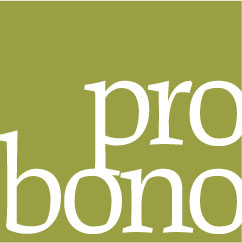 WE don’t expect Australia’s public health system to rely on doctors working for free. So why do we expect our legal safety net to rely on the goodwill of lawyers who do pro bono work?
WE don’t expect Australia’s public health system to rely on doctors working for free. So why do we expect our legal safety net to rely on the goodwill of lawyers who do pro bono work?
Pro bono, broadly speaking, is work done for free or without expectation of a fee, for the public good. The often poor reputation of lawyers belies their proud and long-standing commitment to this work.
It’s easy to understand, in tight financial times, why governments look to pro bono to address the growing crisis in access to justice in Australia. Why not ask rich lawyers to do more?
Leaving aside the ethics of justice relying on charity, the practical answer to this question is simple. Pro bono cannot meet the demand.
There are too many who need a lawyer, but who fall into the widening gap between those who qualify for government-funded legal help and those who can afford a lawyer.
There are gaping holes in Australia’s legal safety net.
Community legal centres, legal aid commissions and indigenous legal services provide free services but, due to chronic underfunding, are unable to help many who need assistance with basic issues such as debt, employment, housing and relationship breakdown.
Repeated inquiries have confirmed the severe access problems. Earlier this year, the Australia Institute conservatively estimated that about half a million Australians miss out on legal help every year, mainly for financial reasons.
The Australian legal profession has one of the world’s strongest pro bono cultures. Recent survey results from the National Pro Bono Resource Centre and the National Association of Community Legal Centres highlight this.
Pro bono work at 36 of the nation’s largest law firms equates to 191 lawyers working for free full-time for a year.
Lawyers volunteering in community legal centres equate to about a further 134 lawyers a year. Lawyers in small firms and barristers also do significant amounts of pro bono work.
More than 300 extra free lawyers is impressive, but to put that in context, there are about 60,000 lawyers in Australia. About 2000 lawyers work in community legal centres, legal aid commissions and indigenous legal services (some part-time).
In addition, private lawyers conduct more than two million hours of legal-aid-funded work, equivalent to an extra 1190 full-time legal aid lawyers a year.
Dig deeper and you find that most pro bono work by law firms is done for not-for-profit organisations, not individuals.
This work is important and helps not-for-profits deliver essential services, but if our focus is on the justice gap for individuals, we can discount more than half of law firm pro bono work.
Based on these figures, pro bono perhaps adds an extra 7 to 8 per cent to the capacity of free legal services assisting individuals who cannot afford a lawyer.
This is vitally important, but no substitute for proper government funding to meet demand.
This is acutely reflected in family law. If you need family law help but cannot afford $200 to $600 an hour for a private lawyer, where do you turn?
Even if firms doubled the amount of their pro bono work, this would add only fractionally to the overall capacity of legal assistance services.
The final factor is expertise. The reason many law firms concentrate pro bono practices in not-for-profits is because it’s a better fit for their expertise.
This is acutely reflected in family law. If you need family law help but cannot afford $200 to $600 an hour for a private lawyer, where do you turn?
Community legal centres provide free advice but typically don’t have the resources to provide ongoing help.
Legal aid commissions will generally assist only if you have a poverty line income, few assets and the dispute relates only to children, not property.
Pro bono, the last line of defence, is no real answer. The bulk of pro bono is done by firms without family law expertise.
The survey results tracked the most common areas of law pro bono couldn’t assist with. Family law was at the top of the list.
The result? About 30 per cent of people represent themselves in family law hearings.
And you can bet that for every person representing themselves, there are many more simply giving up on their rights because it is too hard.
About 30 per cent of people represent themselves in family law hearings.
Many firms do have expertise in employment law, but again survey results are instructive.
They show that while employment law is the No 1 area where pro bono is provided, it is second on the list behind family law for rejected applications for assistance. In other words, while there is expertise, there simply isn’t enough capacity.
Again, this reflects the coalface experience of free legal services.
The Victorian community legal centre Jobwatch advises more than 7000 people a year on employment law issues but misses about 55 per cent of calls due to inadequate funding.
Pro bono lawyers make an important contribution to access to justice. Initiatives such as the Queensland, NSW and Victorian governments’ reforms to allow lawyers working in companies to do pro bono work, and the commonwealth and Victorian governments’ pro bono requirements for firms which tender to provide their legal services, should be commended.
But we need perspective. Pro bono is only a small part of the solution.
The size of the problem requires major government investment, nothing less.
Hugh de Kretser is spokesman for www.communitylawaustralia.org.au, Fiona McLeay is the executive director of the Public Interest Law Clearing House Victoria and David Hillard is pro bono partner at Clayton Utz
Stay Informed. It’s simple, free & convenient!